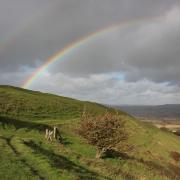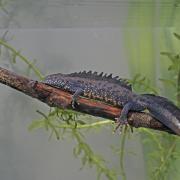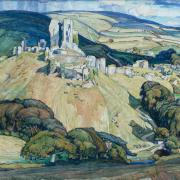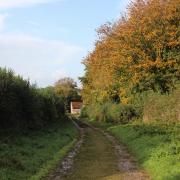As late summer gradually disappears, so do many of the vibrant blooms that have coloured the Dorset landscape over the warmer months. However, this is when our heathlands come to life, as the slow to awaken heather covers this increasingly precious habitat in a purple haze.
It’s surprising to discover that this seemingly wild landscape was shaped by human actions. It began at least 5000 years ago, when our ancestors started clearing trees most likely to make hunting easier. Later, when they became farmers, they used heathland as grazing for their hardy livestock.
Today heathlands are recognised for their importance to rare and specialist wildlife. Plants adapted to the poor, acidic heathland soils such as gorse, common heather and bell heather and the carnivorous sundew flourish. This interesting flora supports ground-nesting birds such as nightjar, Dartford warbler and woodlark. An array of invertebrates like the silver-studded blue butterfly and the grayling butterfly also call heathlands home.
Higher Hyde Heath, an internationally important heathland nature reserve, boasts all six of the UK’s native reptiles, including two rare and protected species - the smooth snake and sand lizard. Whilst Upton Heath nature reserve (pictured) supports 16 species of dragonfly and the ferocious green tiger beetle.
Although scenic all year round, it’s in late summer and autumn that Dorset’s heathlands are at their most beautiful. When the heather blooms, the often-bleak landscape is transformed into a sweeping blanket of purple creating a visually stunning spectacle.
Visit dorsetwildlifetrust/nature-reserves to find a heathland nature reserve near you.

Plant of the Month: Round-leaved sundew
This carnivorous plant (pictured) can be found among the sphagnum mosses on the shores of bog pools and on wet heaths. Its green-red leaves are covered in red ‘hairs’, arranged at the base of the plant in a rosette. The hair-like tendrils are tipped with a sticky ‘dew’ that attracts and traps passing insects. Once stuck, the leaves curl inwards and engulf the prey. This predatory adaptation is due to acidic soil which lacks the nutrients required to sustain the plant.

Sand Lizard Spotting
This is one of the UK’s rarest reptiles. Female sand lizards are a sandy brown with dark blotches along the back; males (pictured) have vibrant green flanks, which are at their brightest during the breeding season. Females lay their eggs in the sand in June and July, with the young hatching a month or two later. Restricted to a few isolated areas in Dorset, Hampshire, Surrey and Merseyside, it favours sandy heathlands and sand dunes, often basking on bare patches of sand.

Why we manage heathland
Being a largely man-made habitat, heathlands require constant management to optimise their condition. If left undisturbed heathland would, over a period of time, naturally return to woodland as trees start to grow unchecked and gradually enrich the soil. To maintain heathland habitat, scrub and bracken cutting, tree removal and the creation of firebreaks and bare sandy patches are implemented. Grazing animals such as hardy breeds of cattle (pictured) and ponies are also kept on the heath to keep vegetation in check.



























